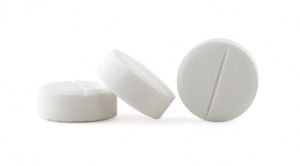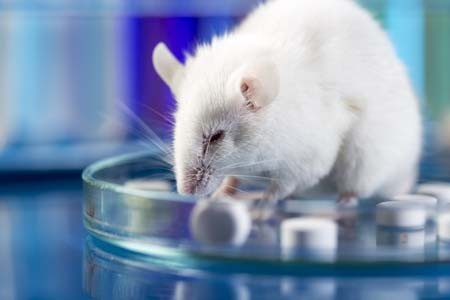In Danish Study, Higher Trace Levels of Lithium in Drinking Water in Certain Regions Do Not Seem to Prevent Bipolar Disorder
Previous studies have found that trace levels of lithium that occur naturally in the drinking water of certain regions are associated with lower rates suicide. Preliminary studies have also shown that lithium in drinking water is associated with lower dementia rates. The trace levels seen in drinking water are many hundreds of times lower than clinical doses of lithium prescribed for bipolar disorder, but they vary greatly according to locality.
A new study by researcher Lars Kessing and colleagues investigated whether chronic exposure to lithium in drinking water might protect against bipolar disorder, but found no evidence that this is the case in Denmark.
In an article published in the journal Bipolar Disorders in 2017, Kessing and colleagues describe findings from their analysis of data on 14,820 patients with a diagnosis of mania or bipolar disorder and (for each participant with bipolar disorder) 10 other age- and gender-matched control participants totaling 140,311. The researchers were able to look longitudinally at the participants’ exposure to trace levels of lithium in drinking water based on their municipalities of residence.
The investigators hoped to find evidence that greater exposure to lithium was associated with lower rates of bipolar disorder. Kessing and colleagues concluded that trace lithium levels higher than those in Denmark might be needed to find such a result.
Editor’s Note: Clinical studies of lithium treatment for children at high risk for bipolar disorder could help clarify whether even conventional therapeutic levels of lithium could reduce or delay the appearance of bipolar disorder.
Naturally Occurring Lithium in Texas Drinking Water Reduced Alzheimer’s Mortality Rates
Several studies have found that trace levels of lithium that naturally occur in the drinking water of certain regions are associated with reductions in dementia compared to regions with less lithium in the water. The latest such study found that higher trace levels of lithium in certain Texas counties were associated with less mortality from Alzheimer’s disease compared to Texas counties with lower levels of lithium in the water.
The research by Val Andrew Fajardo and colleagues was published in the Journal of Alzheimer’s Disease in 2017. Fajardo’s team obtained 6,180 water samples from 234 of Texas’ 254 counties. They also calculated that there was an increase in the Alzheimer’s mortality rate from the period 2000–2006 to the period 2009–2015. However, regions with higher trace levels of lithium were negatively correlated with this increase, suggesting that the lithium in the water had a protective effect on people in those counties.
The researchers controlled for gender, race, education, rural living, and air pollution. Physical inactivity, obesity, and type 2 diabetes seemed to be confounding factors. Obesity and type 2 diabetes were positively correlated with Alzheimer’s mortality and negatively correlated with lithium levels in drinking water, meaning that it is possible that lithium also protects against these conditions.
Lithium in Drinking Water May Reduce Dementia
New research suggests that higher trace levels of lithium in drinking water can reduce dementia rates in the general population. In a 2017 article in the Archives of General Psychiatry, researcher Lars Kessing and colleagues compared data on 73,731 patients in Denmark with a diagnosis of dementia to 733,653 control participants without this diagnosis between the years 1970 and 2013. They were able to match the data to recorded levels of trace lithium in the drinking water in participants’ municipalities of residence.
Lithium levels in the water ranged from 0.6 micrograms per liter to 30.7 micrograms per liter in 151 different locations throughout Denmark. Compared to those exposed to 2.0 to 5.0 micrograms of lithium per liter of water, those exposed to more than 15.0 micrograms per liter had a lower incidence rate of dementia. However, those exposed to 5.1 to 10.0 micrograms per liter had a higher incidence of dementia. The same relationship was also found between lithium exposure levels and both Alzheimer’s disease and vascular dementia.
The lithium levels in the water were approximately 10,000 to 300 times lower than typical clinical doses (typically 900–1500mg/day, which produce concentrations ranging from 0.6 to 1.2 meq/L in patients’ blood). The minute exposures to lithium in the drinking water occurred over decades in the Danish study, and suggest that there may be long-term positive effects to chronic lifetime exposure to very low lithium levels.
These data follow others regarding exposure to trace lithium. In 2011, researcher Orestes V. Forlenza and colleagues reported in the British Journal of Psychiatry that low dose lithium (150–600mg/day) over a period of one year decreased the progression of mild cognitive impairment compared to placebo, while researcher Marielza Andrade Nunes and colleagues reported in the journal Current Alzheimer’s Research in 2013 that an even smaller dose (0.3mg/day) over a period of 15 months slowed the progression of Alzheimer’s dementia. Thus, low or microscopic doses consumed over long periods could slow cognitive deterioration.
Depression and Suicidal Thoughts Linked to Brain Inflammation
A 2017 article by Sophie E. Holmes and colleagues in the journal Biological Psychiatry reports that people with major unipolar depression, especially those with suicidal thoughts, have higher levels of the inflammatory marker translocator protein than do healthy individuals.
The participants with depression and suicidal thinking had high levels of translocator protein in the anterior cingulate cortex, which suggests that inflammation is affecting microglia.
Many studies have found links between different indicators of inflammation and mood disorders, leading researchers to speculate whether targeting the immune system could be an effective way to treat mood disorders. Patients with high levels of inflammation often fail to respond to typical treatments for depression.
Some previous research has found evidence of microglial activation in the brains of people who died from suicide.
The small study by Holmes and colleagues used positron-emission tomography, or PET scans, to observe evidence of translocator protein levels in the brain in 14 medication-free participants in a major depressive episode and 13 healthy volunteers. Those with depression, and particularly those with suicidal thoughts, showed more evidence of neuroinflammation.
Link Clarified Between Gut Microbes and Emotions
A 2017 article in the journal Microbiome suggests that gene-regulating molecules called microRNAs in the brain may be the link between microbes in the gut and emotions.
The research by Alan E. Hoban and colleagues looked at mice raised in a sterile, microbe-free environment. These mice had fewer anxiety-like behaviors than mice raised among the usual bacteria, viruses, and fungi. This finding implies that the microbiome—the trillions of microbes that live in and around our bodies—affects brain functions. In this case, the affected regions were the prefrontal cortex and the amygdala, which both play a role in the detection and response to fearful stimuli. These regions showed alterations in the level of microRNAs present.
When Hoban and colleagues introduced microbes into the animal’s systems, some microRNAs did not bounce back, suggesting that there may be a crucial window early in life when the presence of microbes is needed for the brain to develop normally.
In general, this research shows that microRNAs are key to understanding the link between the microbiome and the brain.
Exercise May Protect Against Breast Cancer
 Epidemiological evidence suggests that exercise reduces breast cancer rates and rates of breast cancer recurrence. However, it is not well understood why this is true.
Epidemiological evidence suggests that exercise reduces breast cancer rates and rates of breast cancer recurrence. However, it is not well understood why this is true.
Exercise that is intense enough to increase the heartrate and induce heavy breathing can increase the hormone epinephrine in the blood. A 2017 article by researcher Christine Dethlefson and colleagues in the journal Cancer Research reported that this elevated level of epinephrine in the blood of breast cancer patients after one intense exercise session stopped their breast cancer cells from growing in vitro and reduced tumor growth by half.
Senior author Pernille Hojman told Reuters that while exercise could not be expected to replace anti-cancer treatments, it is a great supportive strategy that has the added benefits of increasing patients’ quality of life and sense of empowerment.
The study looked at human breast cancer tumor cells in test tubes, and the same type of tumor cells implanted into mice. Only 45 percent of the mice implanted with the cancer cells collected after vigorous exercise developed tumors, compared to 90 percent of the mice who received cancer cells collected before exercise or with no exercise.
Exercise May Improve Memory
 A recent study suggests that exercising vigorously 20 minutes per day may improve “interference memory,” a type of memory that involves reconciling new learning with information one already knows. (Sometimes older information “interferes” with new learning.) In a 2017 article in the Journal of Cognitive Neuroscience, researcher Jennifer Heisz and colleagues report that performance on a high-interference memory task improved when participants engaged in 20-minute daily sessions of interval training for six weeks.
A recent study suggests that exercising vigorously 20 minutes per day may improve “interference memory,” a type of memory that involves reconciling new learning with information one already knows. (Sometimes older information “interferes” with new learning.) In a 2017 article in the Journal of Cognitive Neuroscience, researcher Jennifer Heisz and colleagues report that performance on a high-interference memory task improved when participants engaged in 20-minute daily sessions of interval training for six weeks.
Heisz and colleagues compared three groups of students: one did interval training, another did both interval training and cognitive training, and a control group did no special training. Both exercise groups performed better on the high-interference memory task than the control group. Those who exercised also had higher levels of brain-derived neurotrophic factor (BDNF), which promotes the growth of new synapses and is crucial for long-term memory.
The researchers suggest that this finding could be useful to seniors facing memory deficits, since only six weeks of exercise improved memory performance. Interference memory tends to decline with age.
Previous research has linked aerobic exercise to better academic performance.
In Rats, Weight-Loss Drug Lorcaserin Reduces Opiate Use
The serotonin 5HT-2c agonist drug lorcaserin (Belviq) was approved by the US Food and Drug Administration in 2012 for the treatment of obesity and weight-related conditions (such as high blood pressure, type 2 diabetes, or high cholesterol) in adults. A 2017 article by researcher Harshini Neelakantan and colleagues in the journal ACS Chemical Neuroscience reports that in rats, lorcaserin may also reduce opiate use.
The rats had been self-administering the opiate oxycodone. After receiving lorcaserin, the rats were less likely to consume oxycodone and less likely to seek it out. The rats were also less responsive to cues that had previously led them to consume oxycodone, such as lights or sounds that occurred when oxycodone was available.
Serotonin 5HT-2c receptors both regulate psychostimulant reward in the brain and play a role in reactivity to cues like the lights and sounds the rats associated with oxycodone. Lorcaserin’s effect on these serotonin receptors explains how it could reduce the rats’ drug use.
Clinical trials are expected to examine whether lorcaserin can reduce opiate use in humans in addition to assisting with weight loss.
Gabapentin May Increase Opioid-Related Deaths
 The anticonvulsant gabapentin is sometimes prescribed for chronic pain conditions along with opioids. A 2017 article by researcher Tara Gomes in the journal PLOS Medicine reports that compared to opioid prescriptions alone, co-prescription of gabapentin increases the risk of an opioid-related death by 49%. The risk was increased by 60% for those receiving moderate or high doses of gabapentin (those above 900 mg/day).
The anticonvulsant gabapentin is sometimes prescribed for chronic pain conditions along with opioids. A 2017 article by researcher Tara Gomes in the journal PLOS Medicine reports that compared to opioid prescriptions alone, co-prescription of gabapentin increases the risk of an opioid-related death by 49%. The risk was increased by 60% for those receiving moderate or high doses of gabapentin (those above 900 mg/day).
The increased risk when the drugs are taken together may be because both gabapentin and opioids depress the respiratory system. Opioids also slow the gastrointestinal system, meaning that more gabapentin is absorbed by the intestines than occurs when gabapentin is prescribed alone.
Gomes and colleagues looked at cases of patients who were prescribed opioids and had opioid-related deaths, and matched these with similar patients who had not died while taking prescription opioids during the same time period. The researchers found that having taken gabapentin in the previous 120 days dramatically increased the risk of death from opioid-related causes.
Gomes and colleagues suggest that caution should be used when prescribing gabapentin and opioid drugs at the same time.
Grape Extract May Improve Cognition
 Polyphenolic compounds in colored fruits and vegetables are thought to improve memory and cognition. Extracts from Vitis vinifera, the grape species that includes almost all well-known varieties of wine, have been found to have many beneficial effects: antioxidant, antibacterial, anti-inflammatory, anticancer, antidiabetic effects, in addition to protective effects on skin, the heart, the liver, and neurons.
Polyphenolic compounds in colored fruits and vegetables are thought to improve memory and cognition. Extracts from Vitis vinifera, the grape species that includes almost all well-known varieties of wine, have been found to have many beneficial effects: antioxidant, antibacterial, anti-inflammatory, anticancer, antidiabetic effects, in addition to protective effects on skin, the heart, the liver, and neurons.
For about a decade, researchers have known that polyphenolic compounds from grapes could improve cognitive impairment and reduce neuropathological lesions in the brain in animals with a model of Alzheimer’s disease. New research suggests that the same compounds that protect the plant against damage, fungus, or UV rays may also protect the human brain against damage.
Researchers led by Gioacchino Calapai tested a trademarked nutritional supplement called Cognigrape, which includes extracts from Vitis vinifera, in healthy adults between the ages of 55 and 75 in Italy. One group of 57 participants received 250mg of Cognigrape per day while the other group of 54 received placebo once a day for twelve weeks. Several weeks after the supplementation period, the group taking Cognigrape showed significant improvement in cognitive function compared to baseline and compared to the group taking placebo. The Cognigrape group also showed significant reductions in depression symptoms, improvements in somatic symptoms, and improvements in attention, language, immediate memory, and delayed memory. This is the first study to find an improvement in cognitive performance in humans after supplementation with a Vitis vinifera extract.
The study by Calapai and colleagues was published in the journal Frontiers in Pharmacology in 2017.







